Where Are All the Women Designers? They Are at The Met’s Costume Institute
- Oops!Something went wrong.Please try again later.
- Oops!Something went wrong.Please try again later.
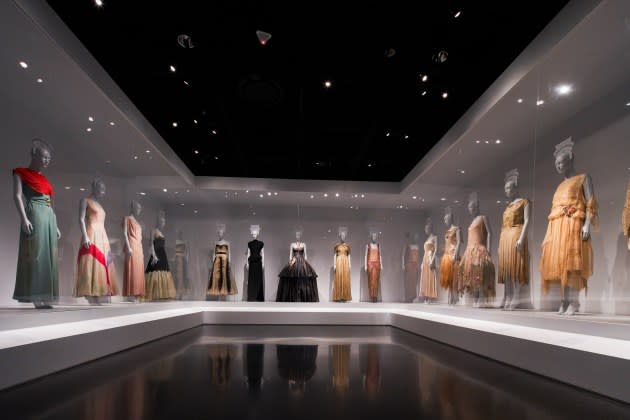
There is a lot to unpack in The Met’s latest Costume Institute exhibition “Women Dressing Women,” and it’s not just the creations of generations of female designers.
While there is no shortage of striking and often au courant designs, there also are boundary-shifting garments and juxtapositions that magnify topics beyond legacy, sexism and history. If visitors don’t just glide through the galleries and stop to read the detailed wall text, they will leave with much to consider and debate. Omission, representation, inclusion, entrepreneurialism, body stereotypes, sustainability, gender fluidity and intergenerational communication are among the conversation starters when “Women Dressing Women” bows to the public on Thursday at the Fifth Avenue museum. The show will run until March 3.
More from WWD
Ann Lowe's Work Comes Into Focus at The Met's Costume Institute 'Women Dressing Women' Show
Travel in Coco Chanel's Cap-toe-pump Footsteps? Oui, Please.
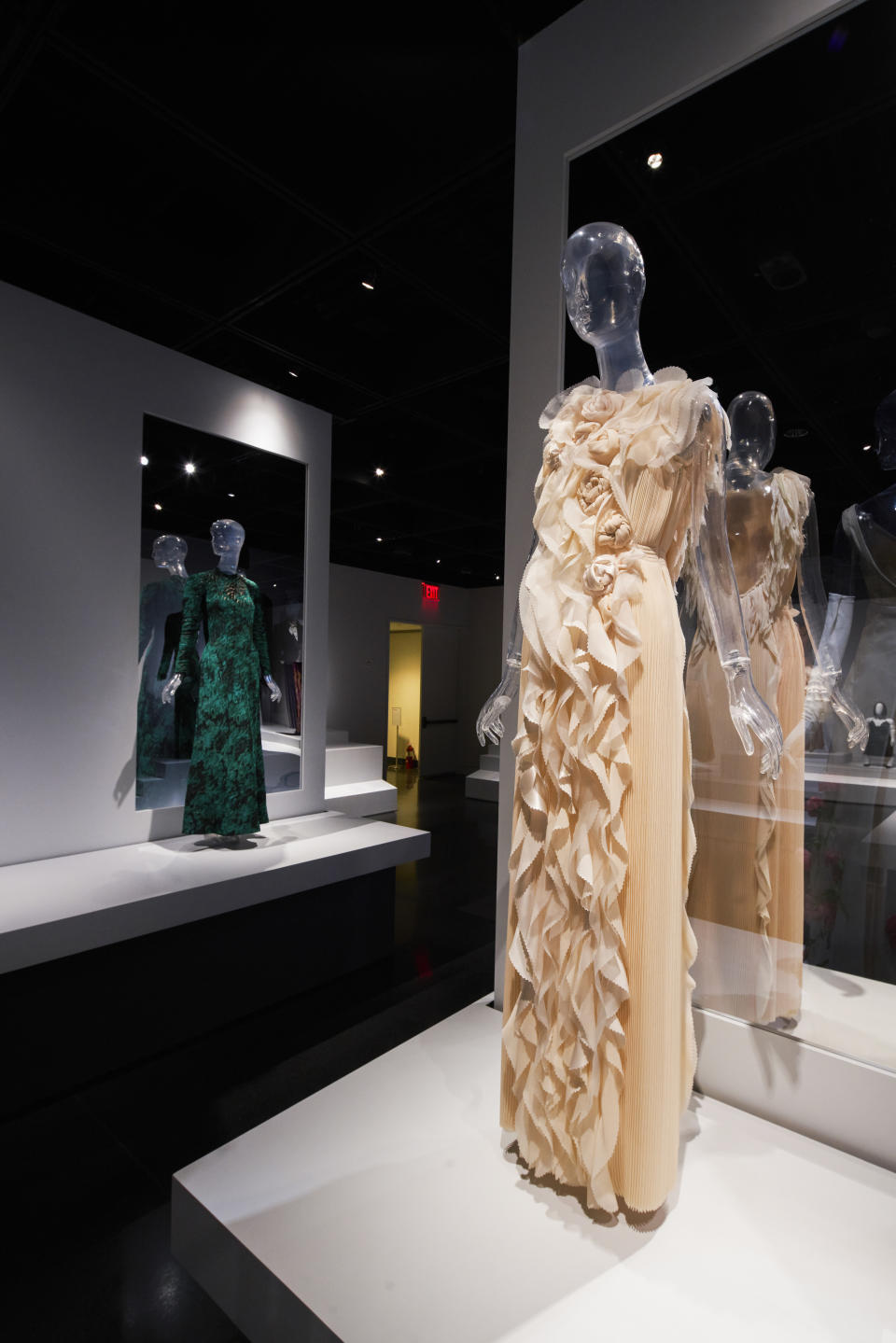
This fall exhibition is the first one that the Met has staged since 2019. Originally slated for fall 2020 to coincide with the women’s suffrage centennial, that plan was scuttled by the pandemic, but The Met’s chief executive officer Max Hollein and the Costume Institute’s Wendy Yu curator in charge Andrew Bolton were committed to seeing the women-led show through. With an emphasis on items from the early 20th century to the contemporary, 50 percent of the 83 or so items are being displayed publicly for the first time. The assortment is rooted in the museum’s permanent collection save for a dozen acquisitions that were made for the show. Isabel Toledo’s “Kangaroo” 1993 dress, a shape-shifting black rayon jersey with a pouch-like pocket at the stomach, is an example of how the show encompasses multiple themes — comfort, practicality and nonconformism.
When The Met will celebrate the exhibition’s opening at a reception Monday night hosted by Hollein, Danish designer Jasmin Soe will be among the designer guests. The “Going Out” dress from her Customiety brand, which caters to people with achondroplasia and uses social media for feedback, was acquired for the show. The black dress with spaghetti straps is displayed on a mannequin that was modeled for by “Tilting the Lens” director Sinead Burke. During a preview of the exhibition Friday afternoon with the show’s co-curators, Mellissa Huber and Karen Van Godtsenhoven, the relevance of previous generations of female designers resonated again and again.
“Organized in the spirit of acknowledgement and celebration,” the show, Huber said, is also “an opportunity to assess our own collection and exhibition history on the broader canvas of fashion history. We hope people will think about who has been remembered, who has been forgotten and why. And also look a little deeper beyond the surface of what’s already been studied or celebrated because there is always so much more to uncover and unearth.”
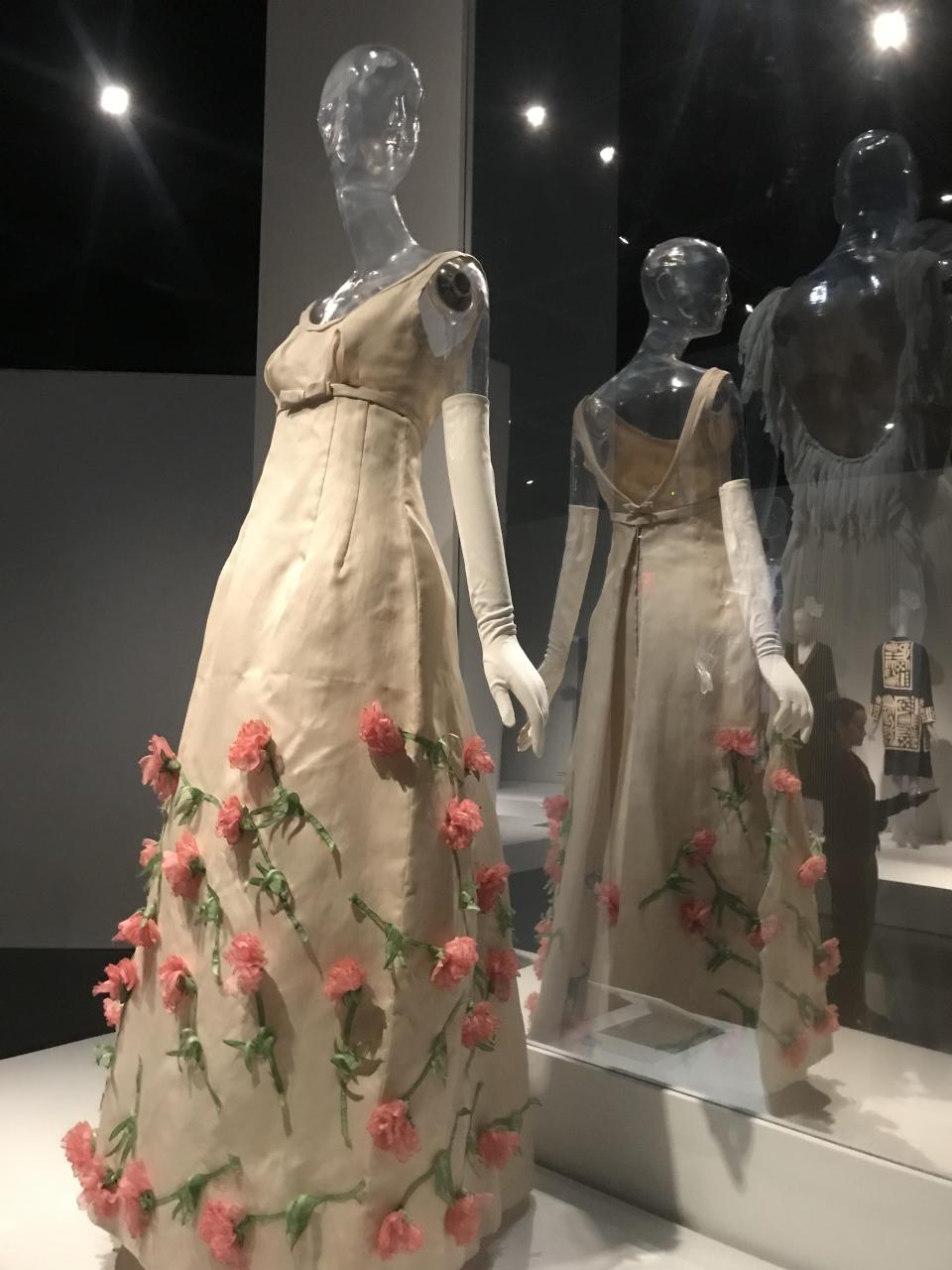
The work of Ann Lowe, a Black designer whose 50-year career included designing Jackie Kennedy’s 1953 wedding dress without any credit, is featured. Another largely overlooked talent was Adele Henriette Negrin Fortuny, whose 1909 size-less pleated “Delphos” gown was popular for 40 years and widely credited to her husband Mariano. Having seen the patent at the Fortuny museum that references that his wife was the true creator, Huber said, “That gesture was his acknowledgement that he recognized and appreciated their collaboration. But histories get built so quickly. It’s very easy to repeat the same names over and over, or what is recognizable.”
RELATED: Ann Lowe’s Work Comes Into Focus at The Met’s Costume Institute ‘Women Dressing Women’ Show
She added, “That is a great example of the more positive things that are occurring more broadly in academics, museum visitors, people within the fashion field. Our visitors are really excited to learn new histories and discover designers they didn’t know much about.”
Like every piece in the show, the pairing at its entrance is more than what appears at first glance. The Grès and Rei” combination, a silk jersey Madame Grès evening dress opposite a Comme des Garçons Rei Kawakubo black sweater, skirt and white T-shirt is not just a lesson in contrasts or the balance of opposites. In 1994, the museum spotlighted Grès’ work in its first exhibition dedicated to a female designer — 14 years after the Costume Institute’s former leader Diana Vreeland had lobbied for it. Kawakubo became the first living female designer to receive a show in 2017.
The show is organized in multiple sections, with Anonymity, Visibility, Agency and Absence/Omission being the main ones. Liminal Spaces of Fashion, American Women, Appropriating Menswear, the Boutique Generation, Reclaiming the Body and Empowerment Through Practice also come into play. While many may not need an introduction to the works of Madeleine Vionnet, Elsa Schiaparelli and Gabrielle Chanel, their show opening looks are ones to marvel. That trio of looks was shot against a mirror to reflect how designers in the early 20th century often shot designs in front of a mirror for copyright purposes to capture the garment’s full view. That common practice not only mirrors what many designers are currently concerned about, but also underlines the beauty of their designs and the business acumen of the designers.
Vionnet advocated for her employees based on her own understanding of rising up through the ranks. And Huber loves to compare Jeanne Lanvin to her contemporary Paul Poiret, “who gets so much credit for all of his innovations. But they both, albeit with all of their different styles, created very large empires that branched out into different art forms — fragrance, decorative arts, theatrical design….But Lanvin created an incredibly stable and flourishing business, which is the longest continuous running couture house in operation. She employed many younger siblings and family members, whereas Poiret burned out like a comet,” Huber said
Anonymity starts with a video slide show that intersperses known designers with the countless anonymous workroom staffers. That montage is “to underscore the collective nature of design, which is a really important undercurrent to the show. That can be tricky to illustrate sometimes, but we think it is very integral to the industry, particularly since it employs such a women-led workforce historically and contemporarily,” Huber said.
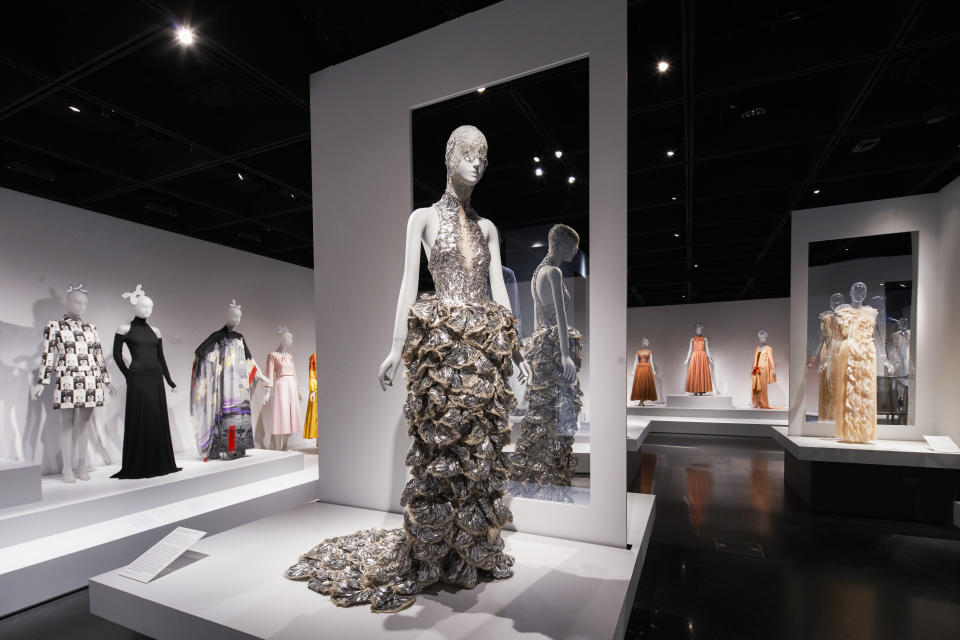
There also is, of course, what the exhibition says about the current state of fashion, which many criticize for having the majority of European luxury houses being led by men.
Noting how the industry’s collaborative nature is something that she and Huber tried to underline, Van Godtsenhoven made the point that the show ends with more contemporary design houses working more collaboratively. One example of that would be a Gabriela Hearst fall 2022 ensemble for Chloé that incorporated the work of Gee’s Bend quilters. “We tried to show the variety of working practices of women designers. If you look at it through a contemporary view, it’s important to recognize a historical trajectory and how these design houses worked in the past and how we have new perspectives for the industry today,” Van Godtsenhoven said.
The Visibility area in the Carl and Iris Barrel Apfel Gallery is a shimmery selection created by “a pantheon of designers” who trained and worked in Parisian haute couture houses during the inter-war years. There are also designs from a few outliers like Elizabeth Hawes, who trained in France but returned to the U.S. to start her own house, and Lucille’s British designer Lucy Christiana Duff-Gordon, a self-taught dressmaker who started her own design house in 1904 after her husband left her and her daughter. Along with Vionnet, Chanel and Lanvin, there are less-heralded names like Callot Soeurs’ Marie Callot Gerber, Maison Jeanne Hallee’s Marie Angenard, Marcel Chapsal, Louiseboulanger’s Marie-Louise Boulanger and the Boue Soeurs’ Sylvie Boue de Montegut and Jeanna d’Etreillis.
“We wanted to use this room to highlight some of the names that have been forgotten over time, but also have been influential,” Huber said. “Sometimes with women designers, there are histories and stories that get lost.”
Case in point: Premet’s Charlotte Larrazet whose 1923 “La Garconne” (Little Black Dress) was introduced three years before Chanel’s great success with her version, Huber said. Another who-did-it-first conundrum is hinted at with Jeanne Victorine Margaine-Lacroix’s 1913 evening dress, which plays up a more natural slimming silhouette rather than a tightly corseted one.
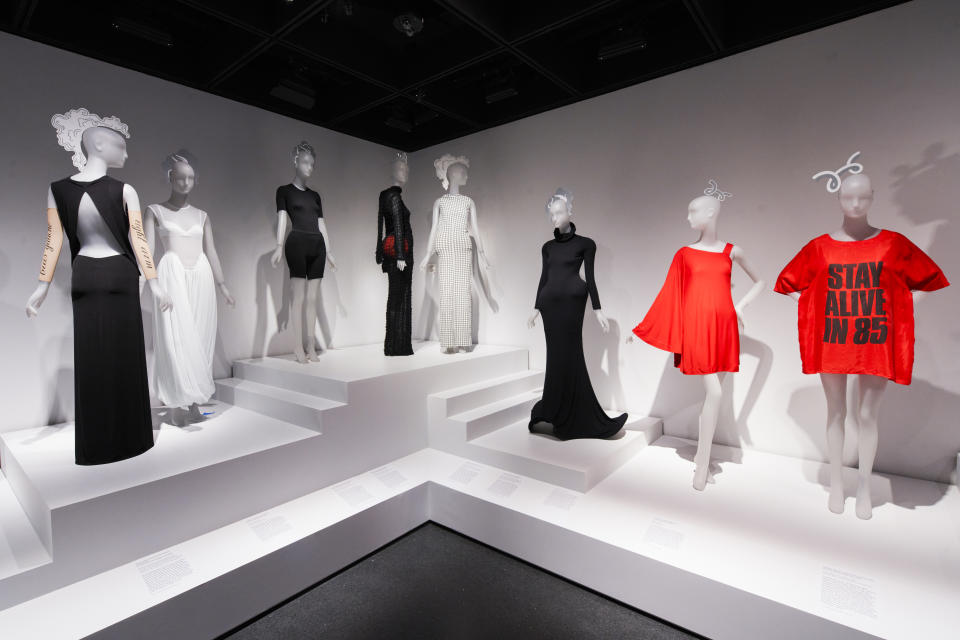
The interconnectedness of fashion is also in view, as Vionnet once trained with Callot Soeurs, and another featured designer, Marcelle Chapsal, trained with Vionnet at one point. Then there is Marie-Louise Bruyere, who had worked at Lanvin and had allegedly taken many of Lanvin’s staffers with her to start her own house, according to Huber. “The breadth of connections, movements and mergers in the early 20th century was really fascinating and speaks to the excitement around fashion as the field was developing and documents the many women who were very active in this one moment in time, when women outnumbered men as the creative leaders in fashion,” she said.
Agency is the largest section and focuses on designers who entered the field from the “Liminal Spaces in Fashion,” as in dance, theater, craft and other areas of the fine arts but working outside of the stratified French haute couture industry, like Maria Monaci Gallenga, who operated out of Italy but had boutiques in Paris, or the Ukrainian-born Valentia Schlee, who drew from her dancer background in starting her business in New York in the 1920s.
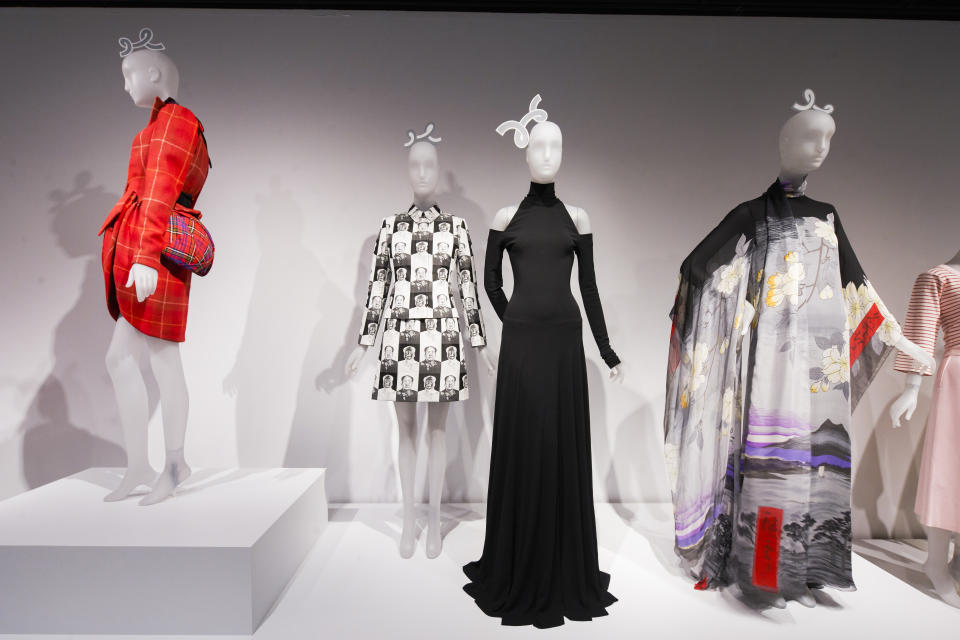
American Women showcases the talents of Jessie Franklin Turner, a board member for the Museum of Costume Art, which became the Costume Institute, as well as Claire McCardell, Bonnie Cashin and Vera Maxwell, among others. Their approach to fashion foreshadows the 1960s’ shift to ready-to-wear.
Another forward-spinning area is Appropriating Menswear, where Hawes’ fall 1939 “Uphill” trousers and Ann Demeulemeester’s 1997 suit offered a more gender-neutral approach to dressing as well as a reminder of fashion’s nothing-is-really-new edict. The latter’s relaxed pantsuit also signals how dressing for the workforce was different than what was more the norm in the 1980s, Van Godtsenhoven said. Other au courant touches an be found in the show’s headpieces made by artist Caitlin Keogh and the soundtrack in the galleries from Julianna Barwick. Another of-the-moment look is a pale blue silk tulle and jersey dress from a recent Tory Burch resort collection, which is meant to reveal and obfuscate the wearer’s body.
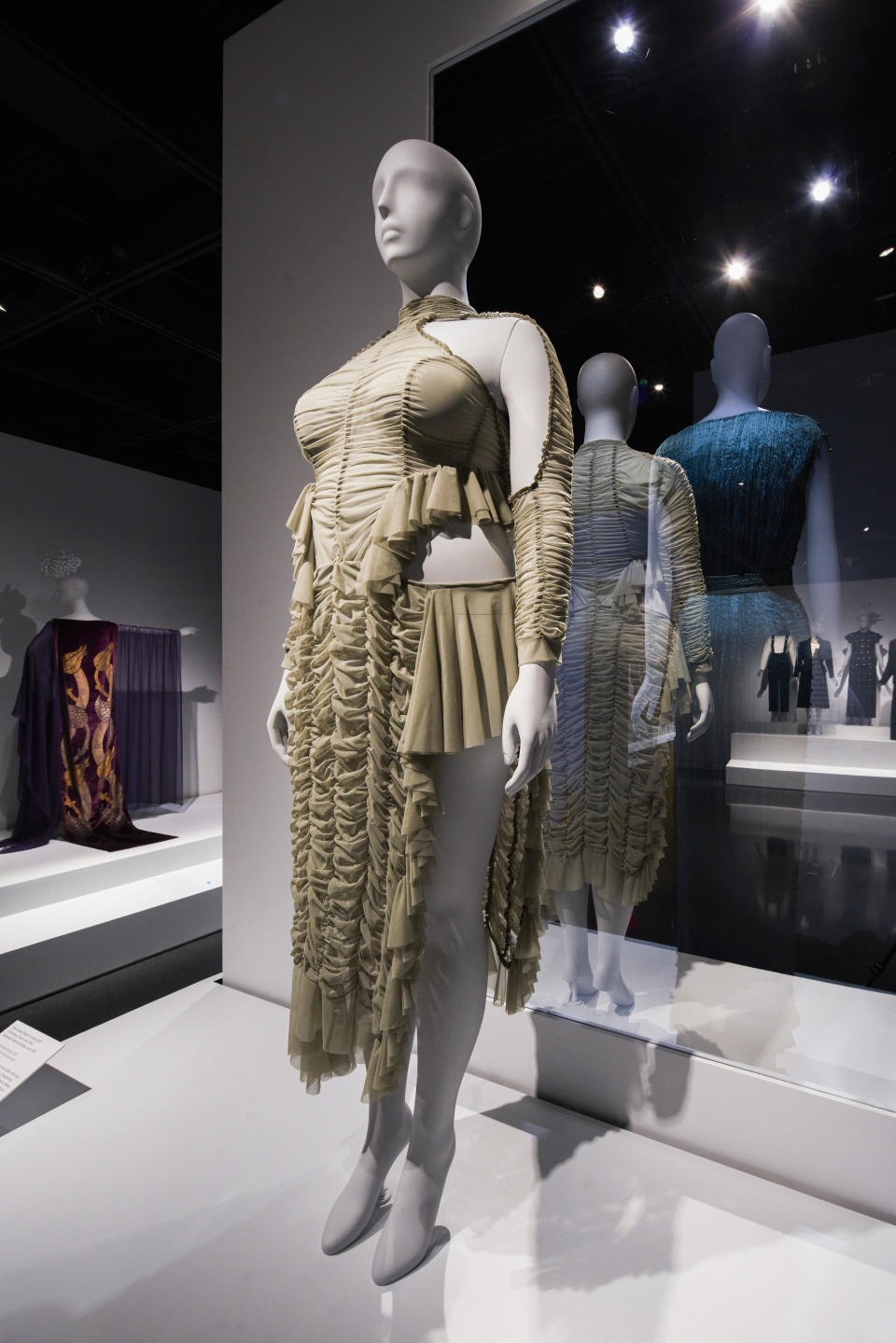
More spirited designs — and prints — can be found in The Boutique Generation: Barbara Hulanicki’s 1972 Biba brown, black and gold suit; Zandra Rhodes’ 1968 yellow felt coat; Betsey Johnson’s Paraphernalia yellow and brown skirt, and Diane von Furstenberg’s mid-1970s leopard-printed ensemble. They and other designers were or are businesswomen. Hulanicki’s autobiography is recommended reading for Huber’s students at New York University, who are keen to learn about what it takes to grow a business and the pitfalls to be aware of.
“Her boutique Biba was incredibly influential. It started as mail-order ready-to-wear that turned into this huge department store that was about so much more than the clothes. It became a social movement and lifestyle,” Huber said.

More featured avant-garde designers include Georgina Godley (who crafted the “lump and bump” collection in 1986); Vivienne Westwood, and Melitta Baumeister, whose fall 2021 bra bodysuit and padded shorts blurred the boundaries between bodies and furniture. Nearby, Bodily Agency is explored with designs from Norma Kamali, Simone Rocha, the aforementioned Soe and No Sesso’s Pia Davis, the first trans woman to show at New York Fashion Week. Toward the show’s end, Empowerment Through Practice spotlights designers with a social ethos like the sustainability-focused Marine Serre and Collina Strada’s Hillary Taymour. A repurposed fall 2021 lace bodysuit by Taymour is shown on a mannequin that was custom made with the help of Aaron Rose Philip, who has cerebral palsy and modeled the look. The mannequin has a neon green wig and a jeweled chain adorns its powered wheelchair, which was provided by Pride Mobility/Quantum Rehab.
Also on view are evening looks from slow fashion specialists like Yeohlee Teng and Jamie Okuma, a member of the La Jolla Band of Mission Indians, whose 2021 “Perfleche” dress was three years in the making. “All of the thought that goes into the way that contemporary designers are working today is so inspiring and reassuring,” Huber said.

Near the infographic that highlights Absence/Omission, Hanifa’s Anifa Mvuemba “Kinshasa” dress is paired with an Iris van Herpen 3D-printed “Skeleton” dress. After Mvuemba’s New York Fashion Week debut was canceled, due to the pandemic, she posted a virtual presentation via Instagram showing her garments in motion as if they were on a human being, but no physical form can be seen. Met attendees can get a glimpse of that on a nearby platform. Another innovative image is the oversize photograph of the 1950s-era actress Joyce Bryant wearing an hourglass-shaped gown by the unheralded Black designer Zelda Wynn Valdes.
Given all of the show’s footnotes and the two curators’ ties to students through their teaching roles, future generations appear to be top-of-mind at “Women Dressing Women.” Van Godtsenhoven, who teaches at Ghent University, said, “We hope that this can become a starting point. This topic is very rich and can be taken further. A lot of designers merit their own study, but fashion history is often told through terms like the ‘masters of haute couture’ or the ‘fathers of Paris Fashion Week.’ We wanted to give a new perspective and tease out these new connections between women designers and show the variety. Also, we hope that aside from the exhibition, the book can be something for new generations.”
Best of WWD

